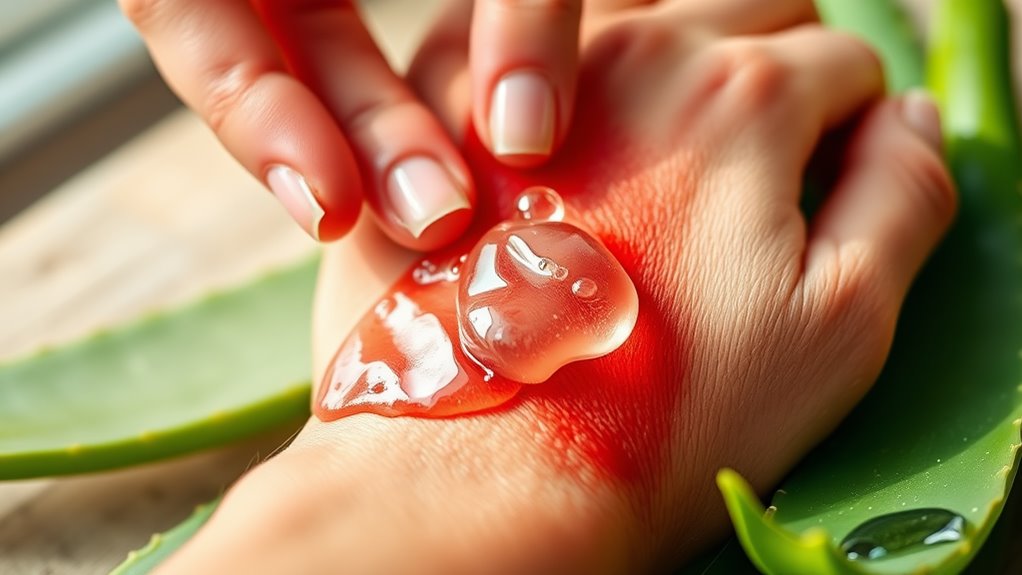The Quickest Way to Soothe a Burn Without Scarring!
Understanding Different Types of Burns
When you experience a burn, it’s crucial to understand the type you’ve sustained, since this knowledge can guide your treatment.
Burns fall into three categories: first-degree, second-degree, and third-degree. First-degree burns affect only the outer layer, causing redness and mild pain. Second-degree burns reach deeper, blistering the skin and intensifying the burn pain relief instantly.
Third-degree burns are severe, damaging all skin layers and requiring immediate medical attention. Knowing these differences helps you choose the right approach for soothing your burn effectively.
Understanding your burn type isn’t just smart; it connects you to a community that cares about healing.
Immediate First Aid for Burns
Taking quick action can make a big difference in how a burn heals.
First, cool the burn immediately by running it under lukewarm water for at least 10 minutes. Don’t use ice, as it can worsen the injury.
Gently clean the area with mild soap and water, then pat it dry. Cover the burn with a sterile, non-stick bandage to protect it.
If blisters form, resist the urge to pop them; they’re your body’s way of guarding against infection.
Finally, watch for signs of infection, like increased redness or swelling, and seek medical help if needed. You’re not alone in this!
Home Remedies to Soothe Burns
Several effective home remedies can help soothe burns and promote healing. You might try applying aloe vera gel directly to the burn for its cooling properties.
Honey is another great option; its natural antibacterial traits can aid recovery. If you have oatmeal at home, a soothing oatmeal bath can reduce irritation.
Cold compresses made from clean cloths soaked in cool water can also relieve pain. Don’t forget to keep the area moisturized with a gentle lotion or coconut oil to prevent dryness.
Each of these remedies can help you feel more comfortable and supported during your healing process.
When to Seek Medical Attention
Even with effective home remedies, some burns require professional medical attention.
If you notice blisters, severe pain, or if the burn covers a large area, it’s time to seek help. You should also reach out if the burn affects your face, hands, feet, or genitals.
Signs of infection, like increased redness, swelling, or pus, mean you shouldn’t wait. If you’re unsure, trust your instincts—better safe than sorry.
Essential Aftercare Tips for Burn Healing
To promote effective healing, it’s crucial to follow essential aftercare tips for burns.
First, keep the area clean and covered with a sterile bandage to prevent infection. Change the dressing daily and apply a soothing ointment recommended by your doctor.
Stay hydrated and eat a balanced diet rich in vitamins to support skin repair. Avoid sun exposure to minimize discoloration and scarring.
If the burn blisters, don’t pop them; let them heal naturally.
Lastly, be patient with your body’s healing process. Surround yourself with supportive friends or family who can help you through this journey to recovery.

